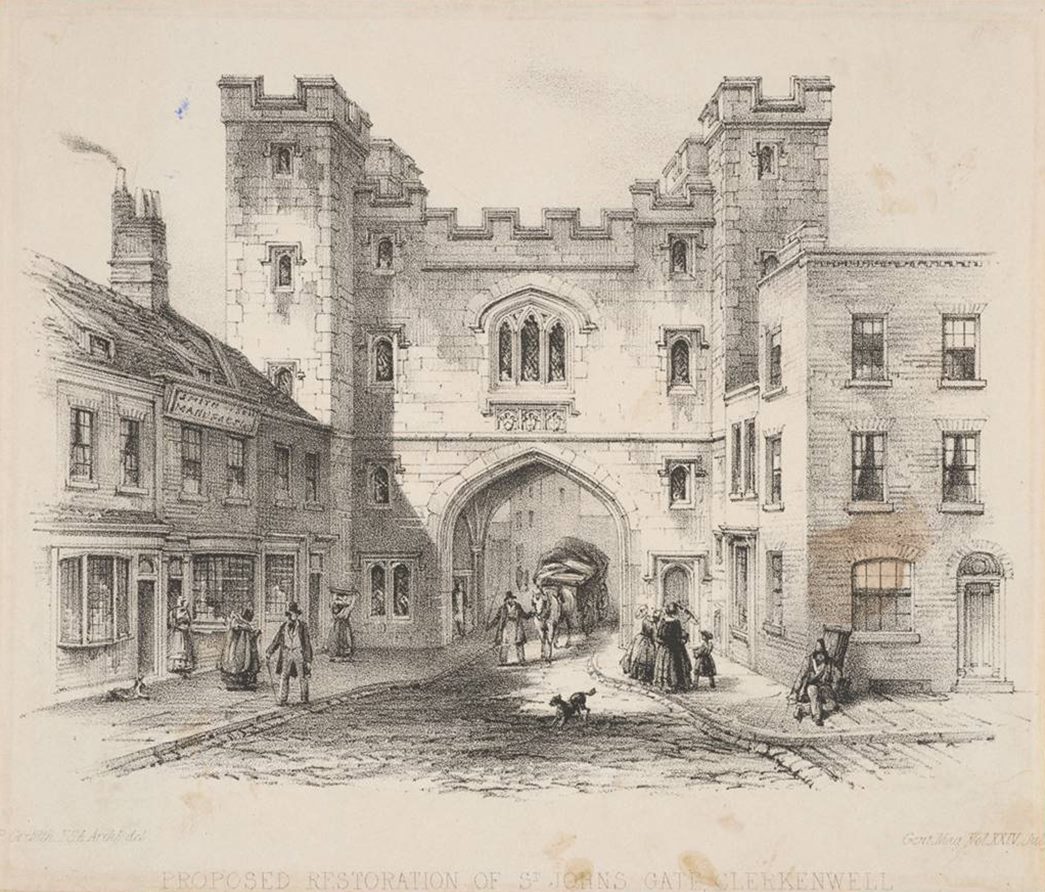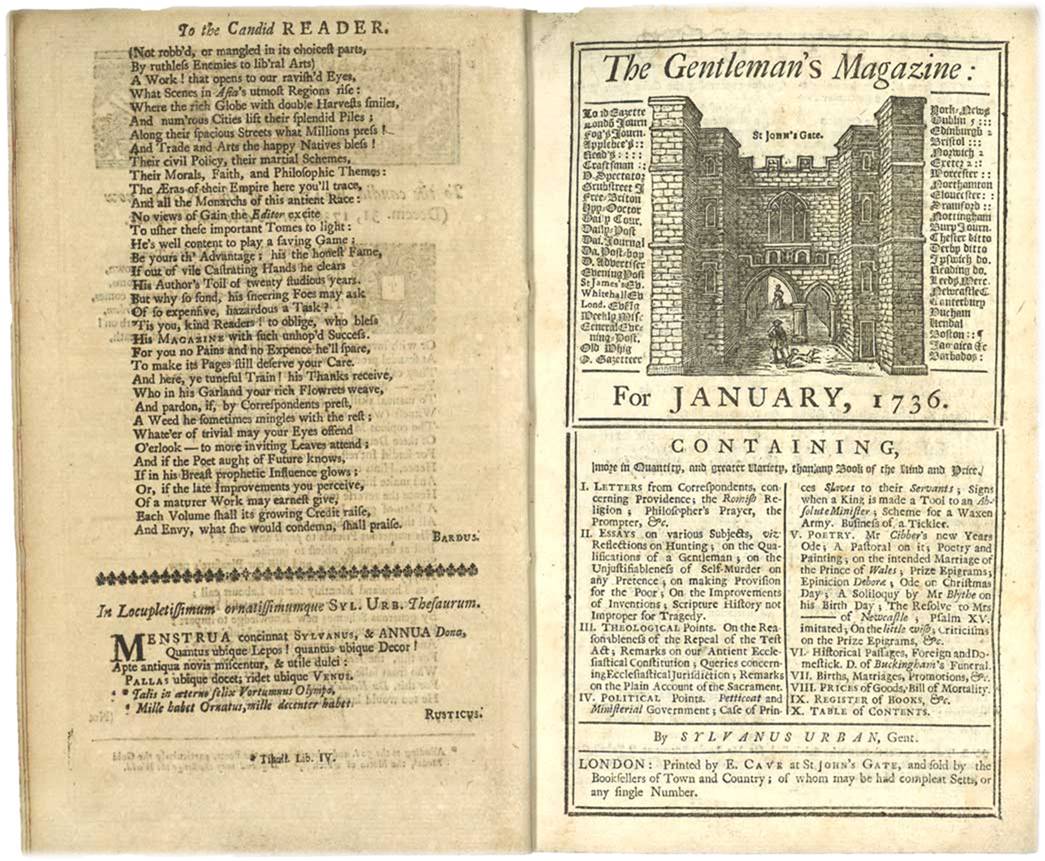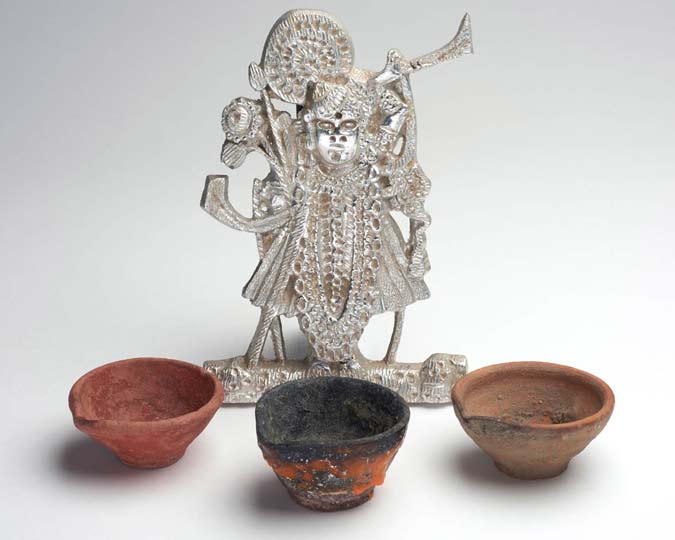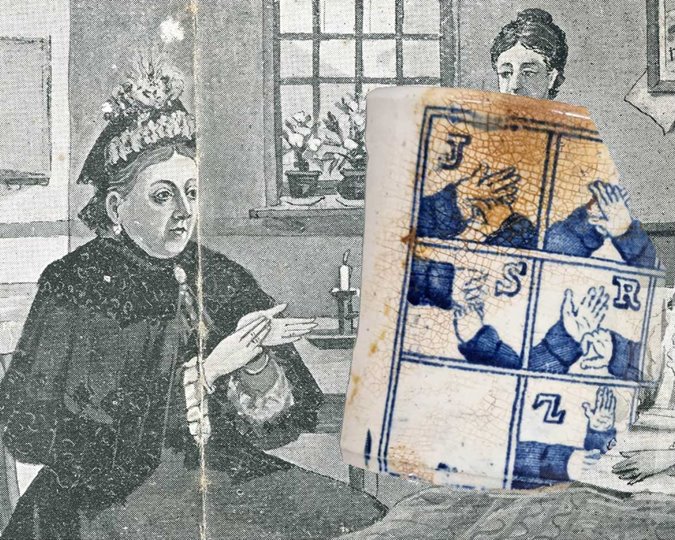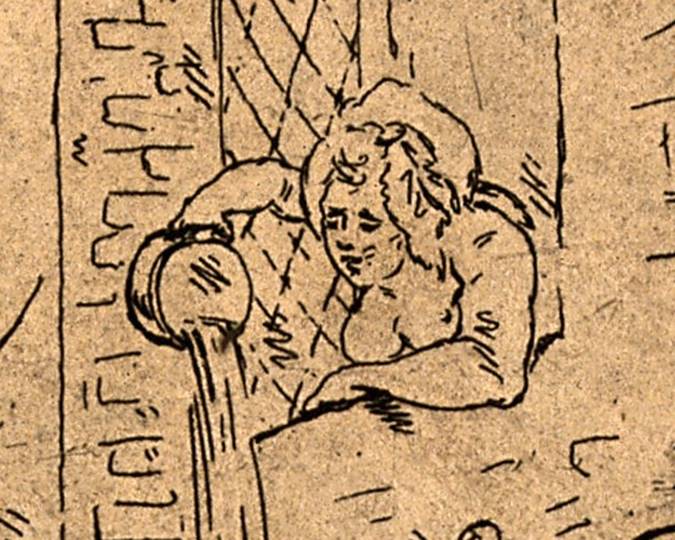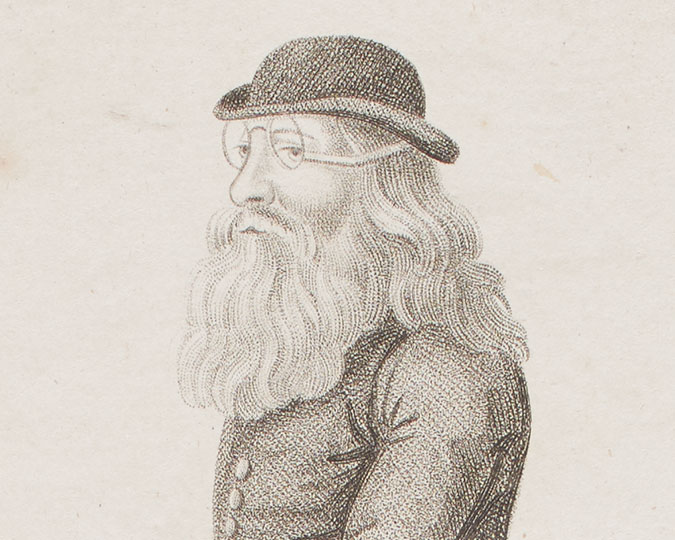Among the many incarnations of St John’s Gate in Clerkenwell it was the home of England’s first ‘magazine’ — The Gentleman’s Magazine. This partnership between The Museum of the Order of St John and the Museum of London looks at the beginnings of this iconic magazine.
Modern visitors to St John’s Gate, a London landmark for over 500 years, will find in its historic walls the Museum of the Order of St John, which tells the history of the Most Venerable Order of St John and St John Ambulance. However, despite being the entryway to the ancestral home of the Order in England since the mid-12th century, St John’s Gate itself has had a varied and unusual history. Seized by the crown in 1540 as part of King Henry VIII’s religious reformations, St John’s Gate saw use as an equipment storehouse, a guard post and as part of the offices of the Master of the Revels at the royal court. By the early 18th century, the Gate’s arch and west tower held a printing press owned by a widow named Sarah Holt, which was purchased by up-and-coming printer Edward Cave in 1728 in order to launch his new vision.
The first ‘magazine’
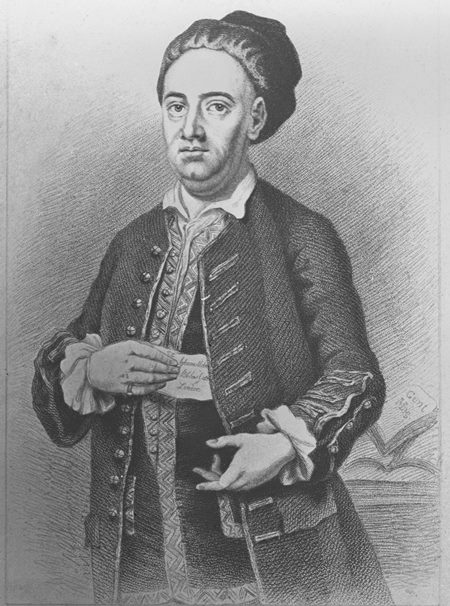
A pioneer
Glass slide of an engraving of Edward Cave, by Edward Scriven after a painting by Francis Kyte, 1750. (Courtesy: Museum of the Order of St John, London)
In 1731, when Cave first began publishing The Gentleman’s Magazine, there was nothing else quite like it in the English-speaking world. This new publication was a departure from the traditional journal, which had continuous page numbers throughout the volume or year of publication and was often peer-reviewed for authenticity. In contrast, this new format known as a ‘magazine’ — a term coined by Edward Cave — took its name from the Italian magazzino or French magasin referring to a storehouse. Cave’s choice of word was intended to reference a military storehouse with its contents of varied and useful supplies, reflecting the range of articles on different topics contained within his magazine.
As with any new media, Cave had to work hard to attract and engage a new audience, and not all of his methods were necessarily legal. He published The Gentleman’s Magazine under the pseudonym ‘Sylvanus Urban’, in reference to his target audience of country-dwellers interested in London periodicals and newspapers. To give readers best value for money, Cave crammed in as many articles as possible, frequently taken directly from other contemporary publications. Today we would consider this plagiarism, but the laws regarding usage of extracts or translations of other works without credit when Cave began publishing The Gentleman’s Magazine were more vague and rarely enforced. As a result, competitors often responded in kind and copied content from The Gentleman’s Magazine; one year after Cave began his new venture a rival business consortium set up The London Magazine in 1732. Throughout Cave’s lifetime these two publications used both legitimate and underhanded tactics to undermine the other and lure away readership.
Famous bylines
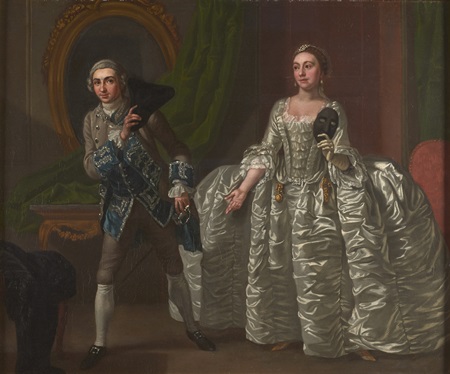
Multiple roles
David Garrick as Ranger in ‘The Suspicious Husband’ by Dr Benjamin Hoadly, 1747. (ID no.: 55.50)
The Gentleman’s Magazine featured a wide array of editorials and contributions, with topics ranging from commercial information and newspaper reports, to a popular section on poetry by both celebrated writers and unknown up-and-comings. Famous contemporary poets like James Thomson and Richard Savage were featured prominently in the magazine. Cave was able to widen his audience further through the running of poetry competitions throughout the 1730s, winners of which were often engaged as regular contributors. The poet Elizabeth Carter published several poems in early editions of The Gentleman’s Magazine under a pseudonym when she was just 16 years old. Samuel Johnson, best known for publishing A Dictionary of the English Language in 1755, first began his connection with The Gentleman’s Magazine as a young poet and began writing for Cave regularly, even writing a biography of him later in life. Through Johnson, Cave also met actor and playwright David Garrick, who wrote a series of pieces for inclusion in the magazine and performed the play The Mock Doctor in an upstairs room at St John’s Gate in 1740 with himself in the title role and Cave’s staff reading the remaining parts.
With the outbreak of war with Spain in 1739, the interests of the magazine’s readership turned from poetry to news and political developments. The Gentleman’s Magazine had included reports on parliamentary debates since 1732, which was already contentious as the public was not meant to know what went on behind the closed doors of the Palace of Westminster. In a tongue-in-cheek attempt to avoid litigation, in 1738 Cave renamed these sections of the magazine Debates in the senate of Magna Lilliputia. He engaged staff as undercover reporters who would attend sessions from the viewer’s gallery then write reports from memory, using obvious pseudonyms for people and places. This work was considered treasonous and there were strenuous, ultimately unsuccessful, efforts to identify who was leaking this information.
Politics and science
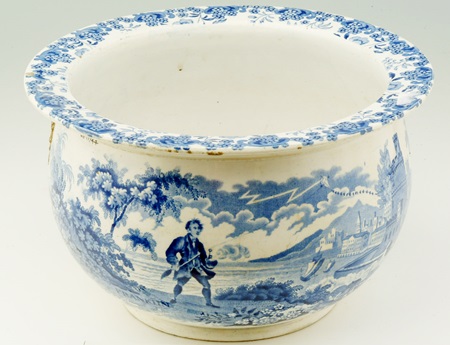
Modern apparatus
Chamber pot with blue transfer-printed scenes inside and out depicting Benjamin Franklin’s electrical experiments. (ID no.: 68.11/44)
Along with poetry and politics, Cave also used The Gentleman’s Magazine as a platform to promote his own special interest in matters of science. He was a keen follower of contemporary developments in the study of electricity, with particular interest in the experiments of an American, Benjamin Franklin. Inspired by Franklin’s descriptions of a metal rod placed atop a building to draw lightning from the clouds, Cave set up his own on top of St John’s Gate and described the experiment in the August 1752 issue of The Gentleman’s Magazine:
We erected an apparatus at the top of St John’s Gate very like that described in the last Gentleman’s Magazine p.327. Wednesday Aug. 12. From about one till three in the afternoon there fell some small showers of rain, without any sound of appearance of thunder or lightning, during which the apparatus was so strongly electrified, that sparks were drawn at the distance of more than an inch from the plumet at the end of a descending wire supported on silk within doors, and the stroke jarred from the fingers end up to the shoulder.
Franklin’s experiments captured imaginations around the world. When Franklin published his Experiments and Observations on Electricity in 1751, Cave promptly published the first English edition for wide distribution to an eager audience, having already published several sections in the form of letters and papers over the years in The Gentleman’s Magazine.
Edward Cave passed away in 1754 at St John’s Gate with Samuel Johnson at his side, but his legacy continued as The Gentleman’s Magazine was published without pause for almost 200 years until 1922. In the 26 years that Cave led the magazine before his death, it changed the face of the English publishing scene and gained an international readership for a new medium. Magazines are now a ubiquitous part of the newsstand, both physical and digital, covering an even wider array of topics than Cave could ever have imagined in those early years at St John's Gate.
This partnership was supported using public funding from Arts Council England.
For guided tours of The Museum of the Order of St John:
Learn more about the history of St John’s Gate, the Order of St John that built it and the modern charity St John Ambulance that began in it by attending one of the museum’s guided tours! More information can be found here.








